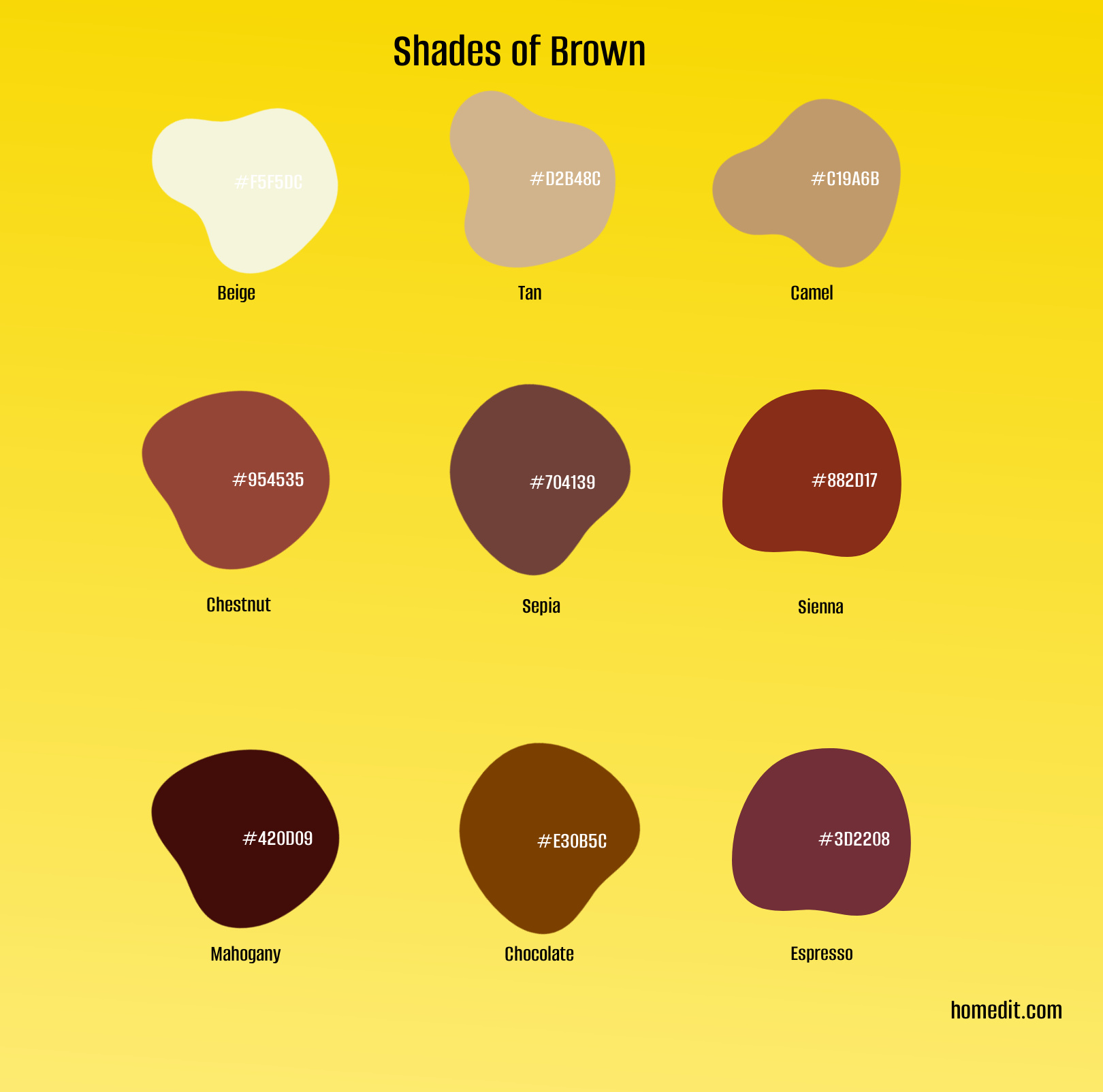Brown Color Meaning: Symbolizes Stability and Reliability
The color brown represents steadiness and dependability. It’s associated with the earth and deeply rooted in the natural world.
Brown can symbolize strength and resilience, tapping into the earth’s unwavering support.
The Psychological Effects of Brown
Brown plays a role in our psychological responses. Besides perception, the earthy can impact behavior and emotions.
Sense of Comfort and Warmth
Brown mimics natural surroundings. In flooring, paint, or furniture, brown creates a cozy atmosphere, promoting a sense of security.
Connection to the Environment
The color brown instills an appreciation for the natural world and works with many styles, including naturalist interior design. In architecture and design, wood, stone, and other organic materials reinforce our connection to the environment.
Perception of Dependability
Brown’s association with reliability influences our perception of products and brands. A company using brown as its primary color is perceived as trustworthy and dependable. In branding and marketing, brown invokes a sense of consistency.
Emotional Grounding
The color brown has a grounding effect on our emotions when we’re anxious or overwhelmed. Brown objects or clothing help bring emotional balance and promote a sense of calm.
Brown and Stability
The color brown represents the unwavering strength and support of the earth in various ways.
- Architecture: Brown is typical in architectural designs as it conveys a sense of structural stability. Natural materials like clay bricks, wood, or stone often symbolize permanence and durability.
- Natural Elements: Browns represent the earth’s consistent and reliable presence.
- Fashion: Wearing brown communicates a dependable and responsible demeanor. Brown clothing and accessories are a popular choice for professional settings.
- Color Symbolism in Culture: In many cultures, brown represents solidity, resilience, and the unyielding support of the natural world.
Brown and Reliability
Brown influences our perception of trustworthiness and dependability.
- Branding and Marketing: Companies use brown to convey a sense of reliability in their branding and marketing. For instance, UPS uses brown as its primary color, demonstrating its commitment to dependable and consistent service.
- Product Design: People perceive brown packaging as more durable. Natural materials like leather, paper, or wood in shades of brown symbolize durability.
- Color Psychology: In color psychology, brown impacts our perception of trust and reliability. For example, wearing brown clothing may evoke confidence in one’s ability to handle tasks.
Brown in Everyday Life
Brown is a staple in furniture, textiles, sculptures, flooring, and more.
In Interior Design and Home Decor
- Furniture: Wooden furniture with rustic or polished finishes is a staple in most homes.
- Flooring: Brown is a common color choice for flooring options such as tiles, laminate, or hardwood. It complements other design elements while evoking a feeling of solidity and support underfoot.
- Textiles and Accents: Brown accessories, such as curtains, cushions, rugs, and throws, add depth to a space. The earth tone of brown makes a room feel inviting and secure.
In Art and Creative Expression
- Painting: In painting, brown adds contrast and a sense of naturalness. Artists use brown’s rich earth tones in landscapes and its subtle shadows in portraiture.
- Sculpture: Brown materials, such as wood, clay, or bronze, create organic, earthy forms. These forms convey a sense of connection to the natural world.
- Photography: In photography, brown evokes nostalgia and comfort.
Shades of Brown
| Shade Category | Shade Name | Hex Number |
|---|---|---|
| Light Brown | Beige | #F5F5DC |
| Tan | #D2B48C | |
| Camel | #C19A6B | |
| Medium Brown | Chestnut | #954535 |
| Sepia | #704139 | |
| Sienna | #882D17 | |
| Dark Brown | Mahogany | #420D09 |
| Chocolate | #7B3F00 | |
| Espresso | #3D2208 |
Light Brown Shades
- Beige: A pale, sandy shade of brown with a yellow undertone.
- Tan: Tan is a light, warm brown shade reminiscent of sandy beaches.
- Camel: A golden-brown hue is reminiscent of the color of camel hair.
Medium Brown Shades
- Chestnut: Chestnut is a warm, reddish-brown.
- Sepia: Sepia is a dark, grayish-brown shade with a vintage feel.
- Sienna: A deep, earthy reddish-brown color named after the natural clay pigment used in art.
Dark Brown Shades
- Mahogany: Mahogany is a dark, reddish-brown hue.
- Chocolate: A deep shade of brown associated with comfort, sweetness, and indulgence.
- Espresso: A dark, almost black shade of brown.
Common Idiomatic Expressions Related to the Color Brown
- Brownie points: Refers to gaining someone’s favor or approval, often by doing small tasks for them. It describes efforts to please a boss or partner to receive a benefit.
- Brown-nosing: Flattering or agreeing with an authority figure to gain their approval.
- Brown bagging: Bring one’s lunch to work or school, often packaged in a brown paper bag. It describes a cheaper alternative to eating out.



